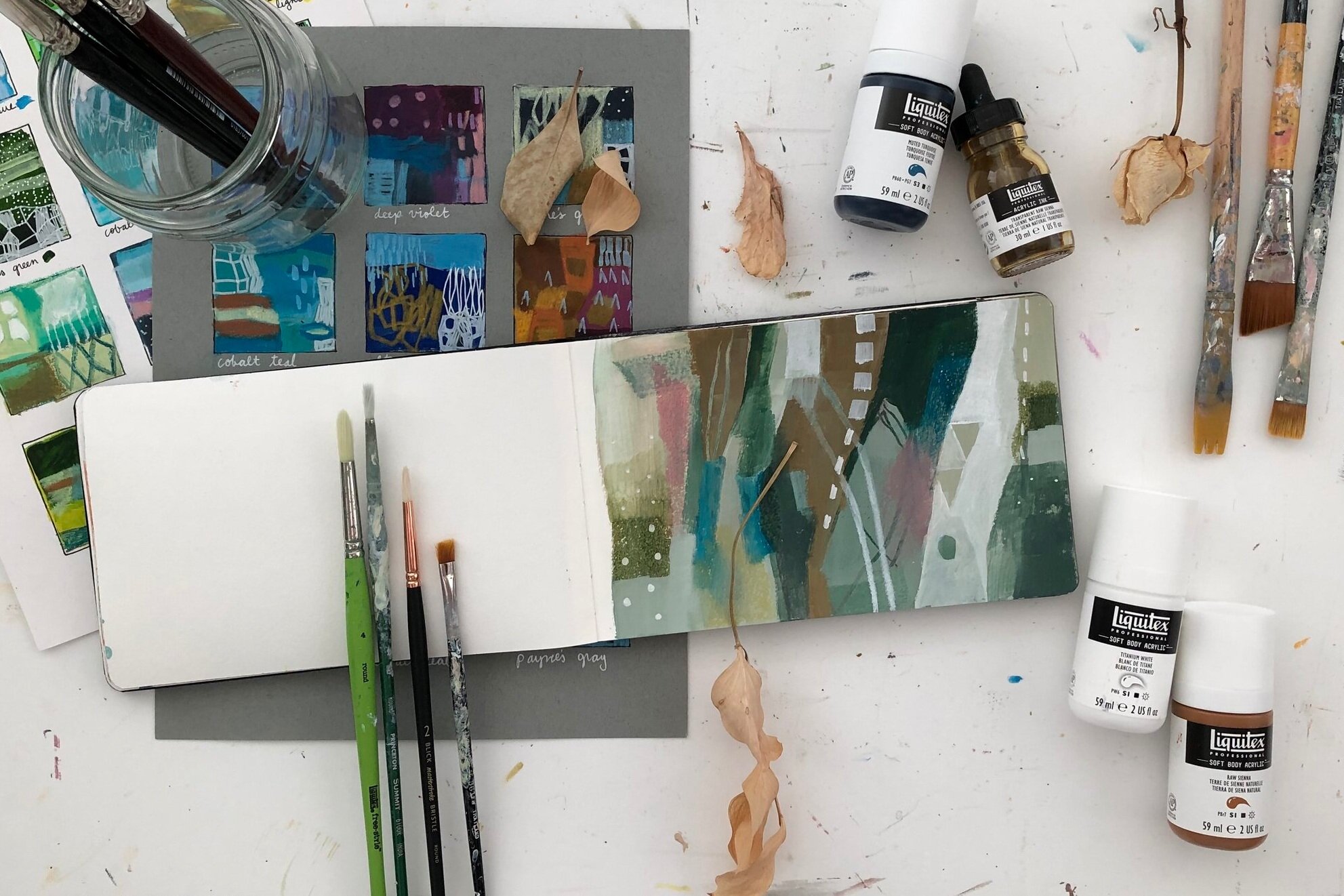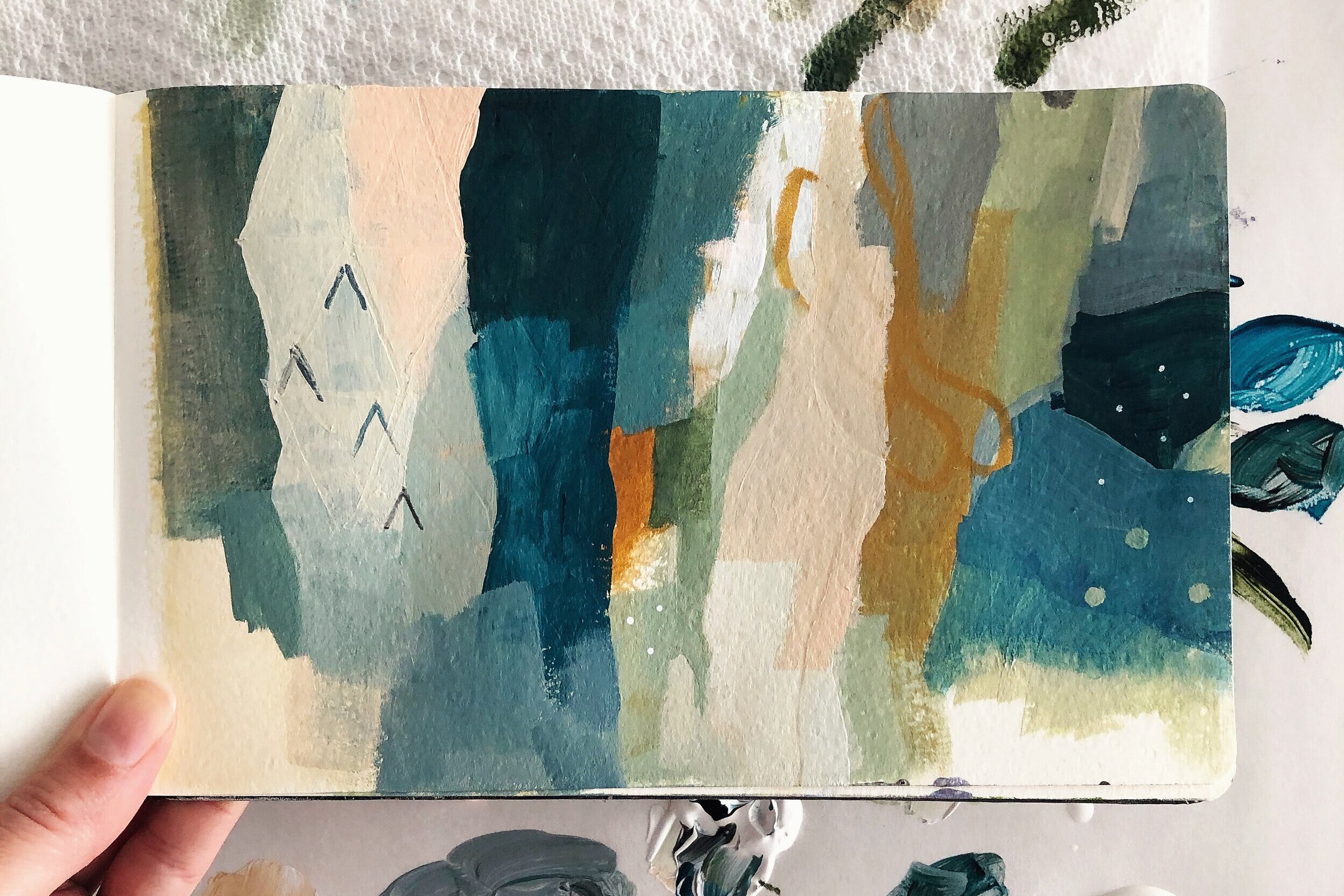I often paint over perfectly good paintings. I recently painted over four 18x24 works on paper. I had done these paintings several years ago at a painting workshop. The paintings were good, solid, finished pieces. However, I didn’t LOVE them. I may have liked them at the time, but I felt like I didn’t love them right now. I pulled out the pieces and started painting over them.
Painting over pieces is one of my favorite ways to start a painting. What would it be like to start at the end and find a new destination? If you remember that painting is about the process, then there is a freedom to paint over what you thought were finished pieces. I always find that having something down on the paper to work with makes the painting process more interesting. It gives you something to respond to and a place to start. There are endless possibilities when starting with a finished painting.
The way I approach painting over a finished piece is with reckless abandon. If you’re going to paint over something, you might as well go all in. I start these paintings as I would with any other piece. The only difference is that I already have so many beautiful elements already on the page. While it may be tempting to keep certain sections, I don’t think about saving any parts of the painting. I give myself full permission to paint over anything and everything that my heart desires. At the same time, I am constantly responding to the elements already in the painting. I’m allowing myself to feel into the lines, marks and colors as I create this new piece.
Once you start, you can’t go back. There’s something freeing about changing, ruining or improving a perfectly good painting. Once you paint over something, you will most definitely have a different painting. Sometimes it will be better, and other times you’ll need to keep working the piece. I like painting over pieces that I thought were done because it frees you of the attachment to the painting. You are no longer tied to the outcome, and you can fully enjoy the process. There’s nothing better than going from a painting that you like to a painting that you love. At the same time, there’s nothing like ruining a perfectly good painting! Both are good outcomes—you showed up, you painted, and you decided to go for it.
The element that I love about painted-over paintings is the layering. Since you’re starting with a finished piece, there is already a set of layers in the painting. The more layers that you add and cover-up, the more interesting the piece becomes. Sometimes only a few small sections show through from the original painting. Other times, most of the original painting can be seen in the new piece. It adds this element of mystery and depth to the new piece. It has more character and draws the viewer in closer to see more.
I enjoyed painting over these four works on paper! I am so pleased with the new finished pieces. I like them much better than the old ones, and I’m glad I painted over them. It’s important to love your work, so if there’s a painting that isn’t quite speaking to you—don’t be afraid to paint over it! You’ll either come out with a better painting or you’ll have gotten more practice for the next time.



